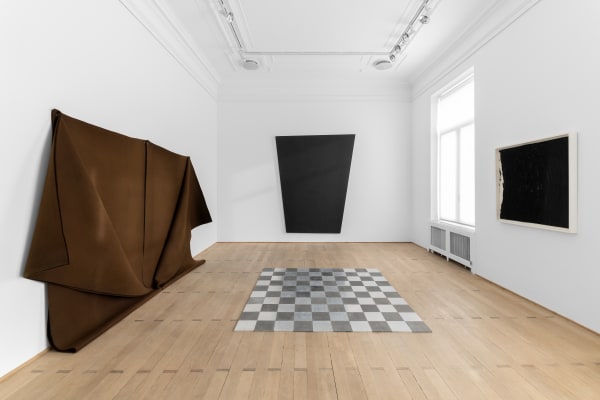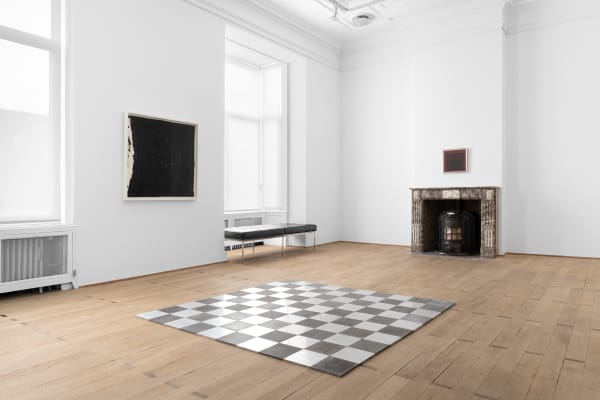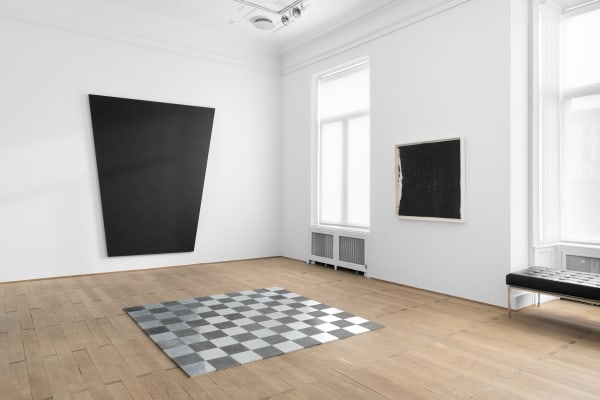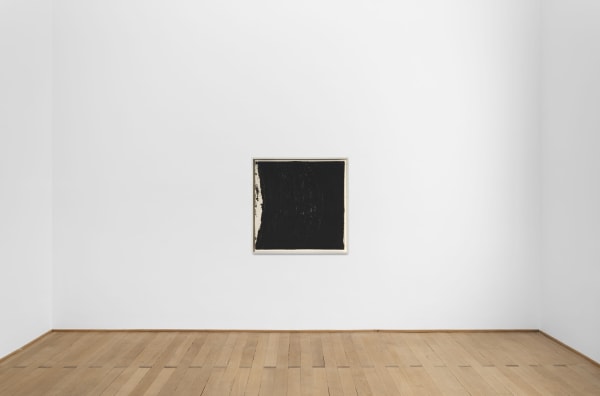Less is More : Exercises in Minimalism
Vedovi Gallery is pleased to present Less is More: Exercises in Minimalism on view on-line and at the gallery, from October 26 to December 18, 2020.
This presentation is a curated selection of artists credited for their contributions to Minimalist thought, featuring works by including Josef Albers, Carl Andre, Donald Judd, Robert Mangold, Robert Morris and Richard Serra. Fusing sculptures, paintings and works on paper, this exhibition highlights the diverse approaches to the reduction of form as formal content over the past twentieth century.
Carl Andre based his artistic practice on the search for the most reduced formal language of materiality. Known as floor works, Andre’s Aluminum magnesium alloy square (in 100 parts) (1969) is intended to reduce art down to its very elemental properties of material. These gridded checkerboard sculptures are comprised of raw, elemental properties, taking their form from the inherent size and shape of the unaltered material units. The colour variations are a result of the literal alternating combinations of aluminum and magnesium tiles, placed together to describe the elemental properties of alloy. Andre reduces sculpture down into a molecular framework of parts, describing the very make up of our fabricated environment through the grid, formed by the simple placement of corresponding squares.
Minimalist artists intended to reduce artistic expression to be free from distinctions of the figure, ornament and allusion. Donald Judd is considered a keystone of the movement; however rejecting the moniker of Minimalist due to its potential to generalize artistic intent. Judd focused solely on form, colour and space with the intent for his works to occupy a reality onto their own, devoid of imitation. Untitled (1969) emphasizes whole, unified shapes as a singular object. Polished brass describes a perfect progression of space indicated in the positive and negative differentiation of form, offering a refined symmetry of exquisite mathematical precision along a horizontal plane. Works such as this wall relief, and his later stacked works, are intended to indicate both the forms themselves as well as the spaces they occupy, making evident a wider understanding of the architecture in which they are placed. Judd’s ‘progressions’ are examples of the artist’s historical association with sculptors like Constantin Brancusi, whose repeating geometries enable a distinctly unique and existential object. Judd’s work is not tethered to allegory or illusion, but rooted in the very reality his sculptural forms reside.
Robert Morris offers an alternative approach to Minimalism in contrast to the crisp geometrical forms attributed to both Andre and Judd. Working out of the 1960’s dance scene at the Judson Theatre in New York, Morris’ reduced sculptural works often operated as props for performances. Out of his exploration of form in space, also in concert with an invested interest of Brancusi, the artist moved away from rigid geometry to random piling and loose stacking of felt material. Attributed to the body due to its natural material composition, felt enables Morris to explore the physical properties of material and their passive relation to gravity. This equally reductivist formal technique offered an alternative vision to minimalist theories that collapsed the artist’s prior experiences in formalism. Though free of figurative referent or metaphor, Morris’s felt works describe a collaboration with the elements of the environment, rather than a will to shape them.
An artist governed by a will to form, Richard Serra defines his art through the physical experience of material. STRATUM 2 (2007) is a perfect vignette of the artist’s employ of medium as formal content. Produced with paint stick, Serra’s drawings often take on the vernacular of his sculptural masterworks, reduced to a single gesture on paper. Existing within the indeterminate space of drawing and painting, these works offer an example of Serra’s relationship to material and experience in the invention of form. Drawing, for Serra, is an exploration of the very material used to produce it. Similar to canonical works such as One Ton Prop (House of Cards) (1969) and Tilted Arc (1981), this drawing locates the very limits of our physical reality through the reduction of form to its very material essence.
The reduced formal considerations of the square buckle under the physical torqueing of pictorial space in Robert Mangold’s Attic Series X, (1991). This work finds its formal referent in Josef Albers’ Study for homage to the square; however, skewing it. Here the picture plane is tweaked to offer an oblique observation of the edges of the canvas. The elliptical line tilts in response to the frame of the canvas, stretching to the very extreme without intersecting the surface’s edge. The artist sought to find a balance between the specific elements of his compositions. The infinity produced through the interplay of shape, colour and line of this work indicates the painting’s own unique reality, unfastened to our own, contained within this reduced yet expressive surface.
As an exercise in the reduction of form, Josef Albers’ Study for homage to the square (1969) is an exquisite example of the painter’s late studies in colour. Completing hundreds in variation, Albers’ Study for homage to the square was a series the artist maintained until is death in 1976. The corresponding squares, sequentially organized in variation of scale, give the impression of gravitating towards the bottom of the frame. The square offers a spiritual geometry of the most reduced rectilinear form, mirrored by the board it is painted on. Through these exercises in variation, Albers produced varying colour palettes, resulting in diverse visual temperatures and density.
As an exhibition that emphasizes placement, environment and material Less is More: Exercises in Minimalism offers varying results in the ripple effects of Minimalist practices over the twentieth century. This exhibition collapses diverse positions on reducing form to its most cohesive and concrete materiality, with the intent to further understand the very material make up of our very physical reality, through a fundamental principle of less as more.















